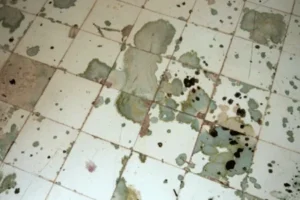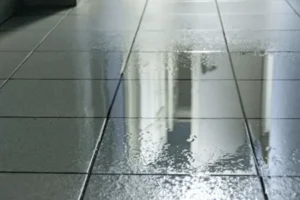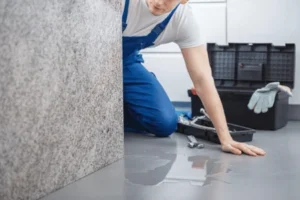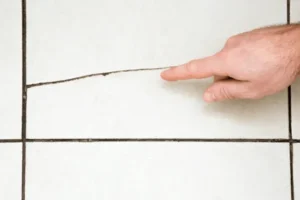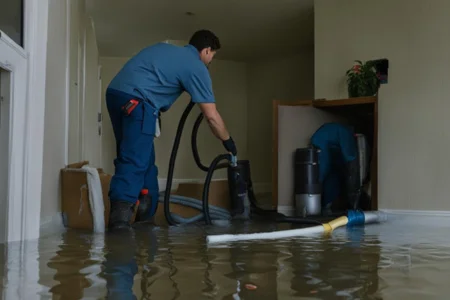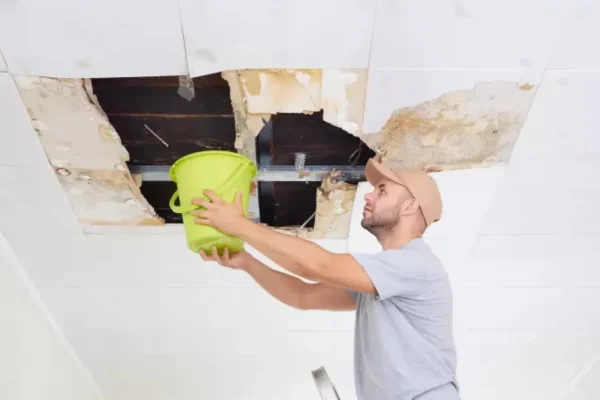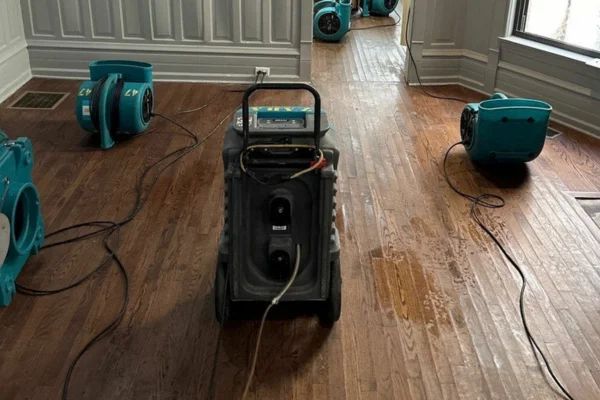Not all floor issues are surface-deep—sometimes, the real problem lies underneath. Subtle signs of water damage under your tile can point to hidden trouble you might not see at first glance. Over time, moisture can quietly impact your home’s structure and value. Knowing what to look for early on can help you avoid major headaches.
Want to stay ahead of potential damage? Keep reading to learn more about what these signs could mean.
Why Water Damage Under Tile Floors Is a Serious Concern
Water damage under your tile floors can lead to serious issues that you might not see at first glance. If left unchecked, it can weaken the tiles and compromise the subfloor, creating costly repairs down the line. Understanding these risks is essential to maintaining a safe and sound home.
Understanding the Risks of Hidden Water Damage
Water damage under tile floors can go unnoticed until major issues arise. Signs of water damage under tiles, like warping or discoloration, signal moisture buildup. If ignored, mold can develop, posing serious health risks.
Over time, flooring materials and subfloors may deteriorate, leading to expensive repairs. Regular inspections help catch problems early, saving homeowners from costly damage and structural concerns.
How Water Damage Affects Tile Floors and the Subfloor
Water damage beneath tiles weakens adhesives, causing cracks and lifting. As moisture seeps deeper, subfloors can rot or develop mold, further compromising stability. Left untreated, this damage spreads, affecting other areas of the home.
Musty odors and floor buckling indicate worsening issues. Checking for leaks and addressing early signs of water intrusion preserves flooring integrity and prevents extensive repairs.
Common Signs of Water Damage Under Tile Floors
Even minor tile imperfections can signal underlying moisture problems. Recognizing these early signs helps prevent costly repairs and structural damage. Here’s what to watch for.
Uneven or Warped Tile Surfaces
If your tiles appear uneven or warped, moisture may have seeped into the underlayment, causing swelling or deterioration. You might feel shifts or notice gaps forming between tiles. Ignoring these signs can lead to structural problems. Inspect for leaks or plumbing issues nearby, and address the damage promptly to prevent costly repairs.
Soft or Spongy Feeling Under the Tile
A soft or spongy sensation when walking on tiles indicates hidden moisture beneath. Water-damaged subfloors lose their strength, leading to instability. This often results from prolonged exposure to leaks. If left untreated, mold growth and further deterioration can occur. Carefully inspect the area and take immediate action to safeguard your flooring and home.
Discoloration or Staining Around the Grout
Dark spots or yellowing near grout lines suggest trapped moisture. This weakening of grout occurs due to prolonged water exposure, leading to deeper structural damage. If discoloration appears, inspect immediately and fix any leaks. Addressing the issue early can prevent extensive repairs and help maintain your flooring’s durability and visual appeal.
Mold or Musty Odors Coming from the Tiles
A musty smell is a strong sign of water damage under your tiles. Even if mold isn’t visible, trapped moisture encourages its spread. Check baseboards and grout lines for signs of water intrusion. Ignoring odors can lead to health risks and structural issues. Acting quickly helps prevent damage and ensures a safer living environment.
Standing Water or Damp Spots Near Tiles
One clear indication of water damage under the tile floor is standing water or persistent damp spots. These could be caused by leaks or failed waterproofing layers. Variations in floor temperature might also suggest moisture buildup.
Visible Cracks in Tiles or Grout Lines
Cracks in tiles or grout often result from underlying water damage. Moisture weakens adhesives, causing fractures that worsen over time. Small cracks can expand quickly if left unaddressed, allowing water to seep further into subfloors. If you find cracks, consider a professional inspection to prevent costly repairs and long-term structural issues.
Causes of Water Damage Under Tile Floors
Noticing the signs of water damage under tile is only part of the solution—understanding what causes them is key to prevention. By identifying the root causes early, you can take steps to protect your home and avoid expensive repairs.
Leaky Pipes or Plumbing Issues
Hidden leaks can weaken tile floors over time. Damp spots or discoloration on tiles may indicate plumbing issues. Even minor leaks promote mold growth and subfloor deterioration. Regularly check sinks, toilets, and pipes for moisture.
Poor Installation or Faulty Grout Seals
Improperly installed tiles or worn-out grout seals allow moisture infiltration. Cracks or discoloration in grout signal potential water damage. Unsealed gaps create an environment conducive to mold and mildew growth. Inspect flooring regularly and repair damaged grout early to avoid extensive issues. Protect your tile floors with proper installation and ongoing maintenance.
Overflowing Appliances or Fixtures
Dishwashers and washing machines can cause water damage under tile floors if they leak or overflow. Water seeps into grout and underlayment, leading to mold growth and weakening the floor structure. Watch for water stains near appliances, inspect connections, and fix leaks immediately.
High Humidity or Condensation Issues
Excess humidity can settle beneath tiles, causing subfloor deterioration. Cool tiles, occasional condensation, or musty smells may indicate moisture buildup. Ensure proper ventilation in bathrooms and kitchens. Use exhaust fans or dehumidifiers to regulate humidity levels.
Flooding or Water Intrusion from Outside
Flooding from heavy rain, poor drainage, or foundation cracks can damage tile floors. Water infiltration weakens the adhesive, causing tiles to lift or crack. Regularly inspect drainage systems, seal gaps around doors and windows, and fix any foundation cracks promptly. Preventative measures help protect your home from long-term water damage.
The Importance of Addressing Water Damage Under Tile Floors Promptly
When you notice signs of water damage under your tile floors, addressing it quickly is essential. Prompt action helps prevent structural damage and mold growth, keeping your home safe and its value intact.
Preventing Structural Damage and Mold Growth
Unchecked water damage can compromise the stability of flooring and foundations. Mold thrives in damp spaces, which worsen air quality and increase health risks. Warped tile may signal deeper issues beneath the surface. Removing moisture early minimizes costly repairs and keeps your home safe.
Preserving Your Home’s Value and Safety
Ignoring water damage risks can deteriorate flooring and home integrity. Moisture buildup can compromise subfloor stability and trigger mold growth. Addressing issues early protects your property’s resale value and ensures a healthier environment. Potential buyers prefer well-maintained homes, making prompt repairs essential.
The Impact of Delayed Repairs on Costs
Neglecting water damage leads to escalating repair costs. Subfloor weakening, mold remediation, and labor expenses increase with time. Damaged flooring lowers home value, making future sales challenging. Early intervention reduces expenses and prevents further deterioration. Detecting and fixing small problems quickly saves money while maintaining your home’s strength, safety, and long-term stability.
How to Inspect and Detect Water Damage Under Tile Floors
If you find signs of damage, knowing when to call a professional can save you from bigger problems down the line.
Step-by-Step Guide to Inspecting Tile Floors for Water Damage
A structured inspection process can help you identify issues early and avoid costly repairs. Use this step-by-step checklist to guide your evaluation of tile floors.
- Check grout lines for cracks, gaps, or discoloration that could indicate water seepage.
- Tap tiles lightly and listen for hollow sounds—this could mean the adhesive has weakened due to moisture.
- Move rugs and furniture to examine covered areas for mold, stains, or warped tile.
- Inspect corners and edges, where moisture often collects unnoticed.
- Smell for musty odors, a common sign of hidden water damage.
- Document any changes and patterns you find during your inspection.
- Monitor suspicious areas over time to see if they worsen or stay stable.
- Call a professional if multiple signs appear or worsen quickly.
Tools and Techniques for Checking Moisture Under Tiles
After you’ve conducted a visual inspection of your tile floors, it’s time to use specific tools and techniques to check for moisture beneath the tiles. A moisture meter is your best friend here; it allows you to detect hidden water damage without having to remove tiles. Simply press the meter against the grout lines to get readings. If you don’t have one, a simple infrared thermometer can help identify cooler areas, which might indicate moisture.
You can also perform the plastic wrap test: tape a square of plastic wrap to the floor and check for condensation after 24 hours. If moisture collects underneath, it’s a sign of trouble.
When to Call a Professional for a More Thorough Inspection
Sometimes, it’s hard to tell if water damage lurks beneath your tile floors, and knowing when to call in a professional can save you time and money. Persistent dampness, mold growth, or grout deterioration indicate deeper water damage beneath tile floors.
If you hear dripping sounds or feel soft spots, expert assessment is crucial. Professionals use advanced tools to detect hidden moisture and prevent structural deterioration.
Conclusion
Staying alert for signs of water damage under your tiles is vital for maintaining a safe and healthy home. If you notice any uneven tiles, soft spots, or musty odors, don’t hesitate to investigate further. Addressing these issues promptly can save you from costly repairs and prevent mold growth. Regular inspections and timely action can protect your investment and guarantee your living space remains comfortable and inviting.
Don’t let hidden water damage worsen! Contact SS Water Restoration for a professional inspection and fast, effective solutions.
Frequently Asked Questions
1. Can Water Damage Under Tile Floors Affect Indoor Air Quality?
2. How Long Does It Take for Water Damage to Appear Under Tiles?
3. Will Homeowners Insurance Cover Water Damage Under Tile Floors?
4. What Tools Are Needed for Inspecting Water Damage Under Tiles?
5. Can I Repair Water Damage Under Tile Floors Myself?


